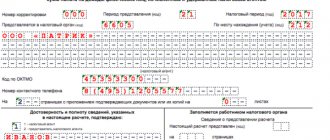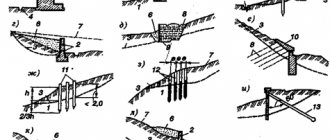What characteristics of furniture are considered for write-off?
When we talk about furniture, we mostly think about office furniture. Although this could also be the setting of retail or industrial premises, as well as catering premises.
General points for which furniture may be considered unsuitable for further use are:
- Partial or complete loss of basic mechanical functions:
- damage to legs, back, armrests, walls;
- deformation of the chair seat or work surface of the table;
- breakdown of mechanisms (for example, adjusting the height or tilt of the back of an office chair).
- Fatal appearance defects:
- indelible stains;
- noticeable defects in upholstery or painting (varnishing);
- Changes in color or durability of the upholstery (for example, as a result of exposure to sunlight).
NOTE! The furnishings of an office or restaurant hall are often the “face” of the owner company, so the role of appearance defects in determining the reasons for the write-off of a table or chair can be no less important than the loss of operational characteristics.
DEFECTS RESULTING FROM CAREFUL HANDLING OF FURNITURE DURING ITS OPERATION
A number of furniture defects occur during its operation. Some defects are a consequence of long-term use of furniture, others are the result of improper and careless handling of it. Long-term use of furniture leads to the so-called aging of furniture. Furniture joints weaken and become loose due to the aging of the glue in the adhesive joints. The planed facing plywood begins to lag behind in places. The varnish film becomes dull and spots appear on it. Contact points in moving furniture parts are erased. Long-term use on table tops, secretaries, and hard chair seats wears off the varnish film. Covering materials on upholstered furniture wear out. Furniture springs in sofas, mattresses, armchairs, etc. sag (the residual deformation of the springs is greater than normal), as a result of which the tension of the facing fabric is weakened and wrinkles and depressions appear on the seats. The padding and covering material of upholstered furniture - shavings, hair, damask, cotton wool - is worn out and felted. Metal furniture parts (handles, hinges, locks, metal frames) also undergo changes: nickel plating and paint become dull and erased from the base. The occurrence of the listed furniture defects during long-term use is quite natural. Some of the listed furniture defects and a number of others may appear on furniture from improper placement in the apartment and from careless handling of it. Installing furniture in damp, poorly ventilated rooms leads to swelling of the wood, dulling of varnish films and the appearance of stains on the front surfaces of the furniture, and the appearance of rust on metal parts. If the furniture is close to heating appliances, the wood dries out and, as a result, cracks appear, damage to varnish films, warping, etc. The following defects may appear from careless handling of furniture: dents, chips, scuffs, flakes, scratches on the front surfaces furniture due to impacts and products touching each other when rearranging furniture; breakage of cabinet furniture legs when moving products along the floor (instead of carrying them); tarnishing of the varnish film and stains from water and other liquids getting on the furniture; stains on furniture surfaces finished with alcohol varnishes and polishes from hot objects.
If the furniture is damaged
Furniture that is used in commercial premises, be it restaurants, hotels, offices, shops, factories, becomes unusable much earlier and more often than what happens with structures at home.
During intensive use, individual units may break down, become irreversibly dirty, tear, scratch, or fade. Data that such property has become unfit for use is recorded when compiling inventory papers or discovering similar facts.
The documentation shows the types of damage, for example:
- breakdown of the frame part, including legs, tabletops, seats, walls, armrests, doors;
- breakdown of the main functioning mechanisms that facilitated the operation of structures;
- deformation of individual elements as a result of excessive heating, high humidity, and wetness;
- wear of the upholstery as a result of the influence of the temporary factor;
- defects associated with facing furniture surfaces.
All these damages imply the need to write off and note these aspects in the act. There is one condition: the costs of restoration exceed the costs of purchasing new units . Information about how much repair work will cost can be obtained from organizations that specialize in this type of service.
Documentation
The need to write off furniture is determined by a specially created commission. It includes competent employees who, due to their job responsibilities and professional skills, are able to objectively assess the condition of the furniture, make a decision on write-off and carry out this write-off in accounting, as well as employees responsible for the safety of a piece of furniture or a group of items.
The decision of the commission is formalized in an act. The document can be drawn up in a unified form or in a form approved by the LNA of the company. For example, if furniture was reflected in accounting as a fixed asset, you can use acts OS-4 and OS4b.
In addition to various types of moral and/or physical wear and tear, which we discussed above, furniture can be written off “ahead of schedule.” These reasons must also be reflected in the act (breakdown, violation of the rules of use, storage, emergency).
Note! Furniture subject to write-off can be identified during a planned inventory of material assets. The frequency and volume of inventory activities is established by the head of the company (Ministry of Finance Regulation No. 49 dated June 13, 1995, clause 2.1). Inventory records initially record the discovery of furniture unsuitable for use. The results of the inventory serve as a reason for convening a commission and drawing up the act we talked about. Based on this document, the write-off occurs.
If the furniture is suitable, but tired
The desire to change the environment is normal and natural not only for households, but also for entrepreneurs.
In this case, write-off occurs not because the furniture has lost its properties, but due to a change in the design concept of the object or the transition of the business to a new status with a higher level of prestige.
In such situations, they are guided by the service life of the furniture, which is established in the technical passport for it.
The write-off of office furniture due to the expiration of its service life, which was indicated in the technical documentation by the manufacturer, assumes the fact that it poses a threat and poses a danger to workers and other property. This process is carried out in accordance with the norms of the Government of the Russian Federation No. 720.
Causal factors are determined in a similar way . If, in the case of a breakdown, the write-off is carried out according to an amount comparable to the costs of repairs, then in this situation it is necessary to act according to the service life.
Where do blinds most often break?
Most managers prefer blinds because of their compactness, convenience, and ease of maintenance of the structure. It has become commonplace to use in such establishments:
- kindergartens, schools, sports complexes
- hospitals, sanatoriums, boarding schools;
- entertainment, office centers;
- banks, post offices.
Businesses are happy to organize their space using blinds.
It is no secret that most institutions, wanting to save money when purchasing goods, do not delve into the strength and reliability of the elements used in the configuration, which leads to inevitable breakdown of the structure. If the operating rules are not followed, the structure or individual elements may break down. Restorable blinds can be saved, but the structure cannot always be repaired.
Sample defect report
There is no established template according to which the write-off procedure is carried out, so the enterprise has the opportunity to independently develop and approve it. The completed act must contain the following information :
- the name of the furniture structures that are being written off;
- total quantity (in units);
- identification codes and signs;
- the results of the inspection by a commission including senior employees of the organization;
- causative factors (breakage, deformation, defects);
- general conclusion;
- signatures belonging to responsible parties.
If we look at a specific example of a document, we can note that it includes several points :
- “Hat” , which indicates the word “I approve”, the name of the general director, and the date of compilation. Then it is signed with the word “Act” in the center, and the title of the document from a new line in the middle is “write-off of furniture, inventory, equipment.” All members of the commission are listed below, it is indicated that they examined certain pieces of furniture and found them to be written off on certain grounds.
- The basic part, represented by the table . The first column displays the name of the structures to be decommissioned. The second indicates the inventory number, then the unit of measurement, quantity. The last column is the general technical condition and causal factors.
- The final part begins below the table and includes the immediate conclusion, information about the group members, and results.
Reasons for different types
The reasons for write-off largely depend on the type of furniture. Let's look at the most common of them.
Office chairs and armchairs
Among the reasons causing the need to write off office chairs and chairs, the following points :
- damage to the leg, back, armrest;
- seat deformation;
- faded upholstery;
- scratches and holes in the upholstery material;
- loss of aesthetic properties of wood.
- breakdown of fittings (mechanical parts);
- the formation of noticeable gaps due to weakening or unsticking of tenon elements;
- warping of doors, insert shelves;
- breakdown of fittings;
- darkening of varnish;
- darkening of wood;
- destruction of the structure of the material due to the appearance of stains (during exposure to chemicals), aging, fading;
- corrosion;
- damage to the facing material by mold
Carpet
Despite the fact that carpet is not technically furniture, it is subject to write-off according to the same principle as other structures discussed earlier. Reasons include discoloration, formation of bald spots, spots, and holes.
Curtains
More often than not, curtains are susceptible to fading due to exposure to sunlight . But other defects may also form, such as the appearance of spots and holes.
Cushioned furniture
upholstered furniture is also subject to write-off . Such procedures are carried out in hotels, sanatoriums, and boarding houses. Structures located in public areas quickly deteriorate due to active use and negligence of visitors and staff.
The reasons for write-off measures include wear of the upholstery, sagging springs, cracks and chips.
Of course, an unaesthetic interior can easily ruin the organization’s reputation and reduce the flow of clients. In this regard, write-offs must be carried out in a timely and competent manner .
DEFECTS CAUSED BY DAMAGE TO WOOD BY HOUSE PESTS
Household pests that attack furniture wood include the following insect pests: furniture borer beetle, house borer beetle, red house longhorn beetle, black house longhorn beetle, wood-boring beetle, variegated borer beetle or watchmaker beetle, termites - white ants. The larvae of these pests feed on wood, making passages—holes—in it. The presence of a large number of holes on the surface indicates that the wood has undergone significant destruction. B.V. Malyshev and others. “Furniture repair”. M., 1965
Reflection in accounting with postings
In the classical reflection, office furniture items appear as inventories. So, the receipt of furniture is reflected through the following business records :
- Dt 08 Kt 60 – capitalization;
- Dt 19 Kt 60 – VAT amount;
- Dt 60 Kt 51 – payment to suppliers.
If we talk about the write-off procedure, it is reflected through the following entries :
- Dt 91 Kt 01 – residual price;
- Dt 02 Kt 01 – registration of wear and tear;
- Dt 10 Kt 99 – capitalization of MC in the process of liquidation;
- Dt 91 Kt 99 – receipts received from disposal;
- Dt 99 Kt 91 – losses.
Thus, there are many causal factors for writing off furniture; in any case, it is necessary to act in accordance with the law and accounting rules.
The registration of the act of writing off goods is in this instruction.









